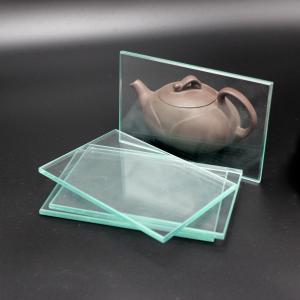

Laminated glass is a composite glass product made by bonding two or more pieces of glass with one or more layers of organic polymer intermediate film sandwiched between them. After special high-temperature preloading (or vacuum pumping) and high-temperature high-pressure processing, the glass and intermediate film are bonded together.
The commonly used interlayer films for laminated glass include PVB, SGP, EVA, PU, etc.
In addition, there are some special types such as colored interlayer laminated glass, SGX printed interlayer laminated glass, XIR LOW-E interlayer laminated glass, etc. Decorative and functional laminated glass such as embedded decorative components (metal mesh, metal plate, etc.) laminated glass, embedded PET material laminated glass, etc.
Main types
According to the different melting points of the intermediate film, it can be divided into: low-temperature laminated glass, high-temperature laminated glass, and insulating glass;
According to the different materials sandwiched in the middle, it can be divided into many types such as paper, cloth, plant, wire, silk, metal wire, etc;
According to the different bonding methods between interlayers, they can be divided into: mixed laminated glass, dry laminated glass, and hollow laminated glass;
According to the different layers of the interlayer, it can be divided into general laminated glass and bulletproof glass.
Material characteristics
Even if the glass breaks, the fragments will stick to the film, and the surface of the broken glass will still remain clean and smooth. This effectively prevents the occurrence of debris stabbing and penetration falling incidents, ensuring personal safety.
In Europe and America, most building glass uses laminated glass, not only to avoid injury accidents, but also because laminated glass has excellent seismic invasion resistance. The intermediate film can withstand continuous attacks from weapons such as hammers and machetes, and can also resist bullet penetration for a considerable period of time, making its level of safety precautions extremely high.
The glass is safe to break and may shatter under the impact of a heavy ball, but the entire glass still maintains a cohesive interlayer, with fragments and sharp small pieces still sticking to the intermediate film. When this type of glass breaks, the fragments will not disperse and are often used in vehicles such as cars.
Tempered glass requires a significant impact force to break, and once broken, the entire piece of glass bursts into countless fine particles, leaving only a small amount of broken glass in the frame.
Ordinary glass shatters upon impact, typically resulting in many long, sharp edged fragments.
When the laminated glass breaks, the mirror shaped fragments surround the opening, and there are many glass fragments around the penetration point. The length of the broken metal wire varies.



